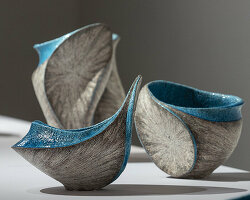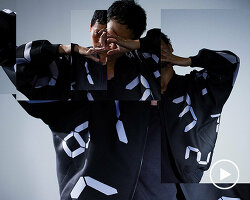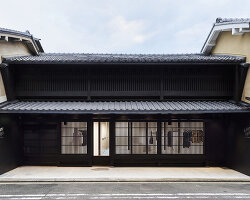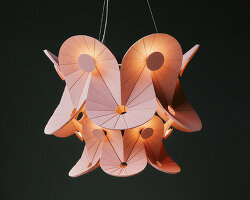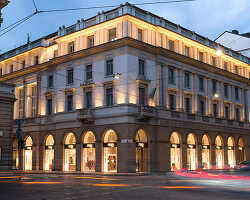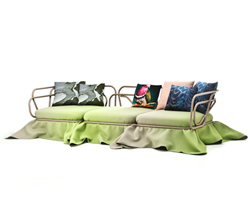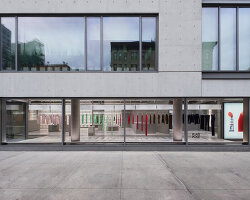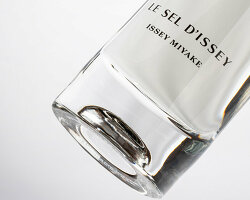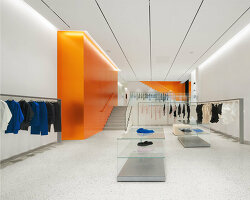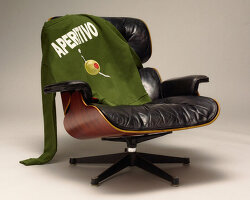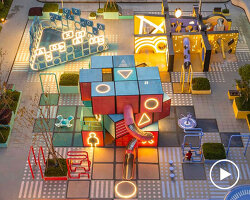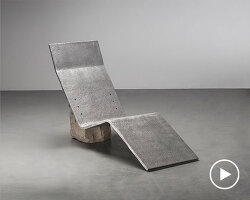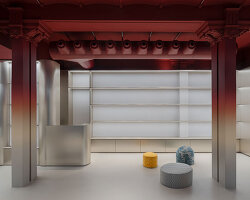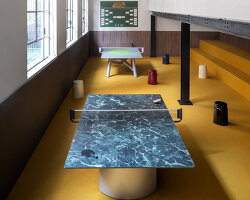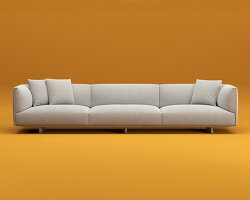designboom interviews A-POC ABLE ISSEY MIYAKE and atelier oï
During Milan Design Week 2025 (April 8-13), A-POC ABLE ISSEY MIYAKE and Swiss design studio atelier oï present a groundbreaking project that redefines the intersection of fashion and lighting. Titled ‘TYPE-XIII Atelier Oï project,’ the exhibition at the ISSEY MIYAKE / MILAN flagship store explores how a single piece of cloth and a single piece of wire can transform into luminous, sculptural objects. In an exclusive interview with designboom, Yoshiyuki Miyamae, designer of A-POC ABLE ISSEY MIYAKE, and Patrick Reymond, co-founder of atelier oï, discuss the project’s evolution, its material innovation, and the philosophy that underpins their work.
‘As a brand, we have always sought to explore the potential of fabric beyond its conventional use,’ begins Yoshiyuki Miyamae, A-POC ABLE ISSEY MIYAKE’s designer. ‘Clothing is just one aspect of what a piece of cloth can become. With atelier oï, we found a partner who shares this curiosity about materials, and together, we embarked on a journey to see how fabric could influence and shape light. This project is an evolution of our philosophy, a way to push the boundaries of textile design into new and unexpected realms.’
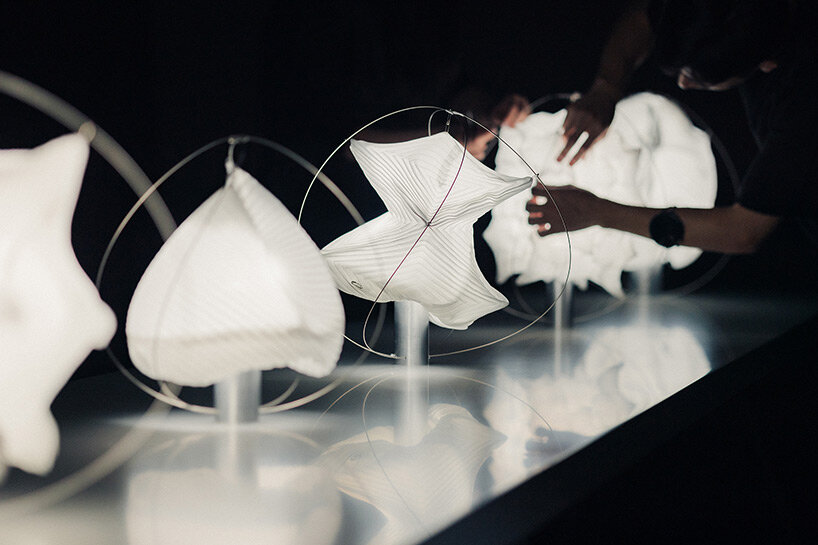
during Milan Design Week, from Tuesday, April 8 to Sunday, April 13, 2025, the ISSEY MIYAKE / MILAN flagship store hosts a special exhibition titled ‘TYPE-XIII atelier oï project’ | all images courtesy of ISSEY MIYAKE INC.
A-POC ABLE and atelier oï – A cross-disciplinary creative exchange
A-POC ABLE ISSEY MIYAKE is a brand that pushes the boundaries of clothes-making, rooted in Issey Miyake’s pioneering ‘A Piece of Cloth’ (APOC) concept. Since its inception in 2021, the brand has expanded its scope beyond garments, embracing cross-industry projects that explore the infinite potential of a piece of cloth with society in mind – hence the name ‘ABLE’. atelier oï (more here) was founded in 1991 in La Neuveville, Switzerland, by Aurel Aebi, Armand Louis, and Patrick Reymond, and is known for its transdisciplinary approach spanning architecture, interior, and product design, shares a similar philosophy of material-driven experimentation. Their global recognition includes multiple collaborations, leading up to the encounter with the Japanese brand at Milan Design Week 2023, which sparked a creative dialogue that evolved into a dedicated exploration of lighting.
‘It was like playing ping-pong with ideas,’ continues Miyamae. ‘We would pose a question, and through constant back-and-forth exchanges, we refined our thoughts. We questioned how fabric could shape light, how to integrate our textile expertise into lighting design, and how to create something both sculptural and functional. After months of discussion, trials, and material explorations, we discovered a new design language that felt natural to both of us.’

Swiss-based studio atelier oï with co-founder Patrick Reymond in the middle, and A-POC ABLE ISSEY MIYAKE’s team of engineers with designer Yoshiyuki Miyamae in the middle
O Series: A floral interplay of light and texture
At the heart of the exhibition is the O Series, a portable lighting collection developed in collaboration with Japanese manufacturer Ambientec. Inspired by the delicate beauty of flowers and the Japanese art of ikebana, these lights invite users to rearrange them according to mood and space. The lampshade is crafted from recycled polyester ‘Steam Stretch’ fabric, a textile technology utilized in A-POC ABLE’s clothes-making process. When exposed to heat, the material shrinks, creating organic pleats that softly diffuse the light. Encased in an elegantly curved oval wire frame designed by atelier oï, the lamp is both a poetic and practical object – fully collapsible for easy storage.
‘The O Series seamlessly integrates into various spaces and environments, allowing users to effortlessly move the light throughout their daily lives.It’s an ever-evolving play of shadow and glow, like arranging flowers in a space. We wanted to design a product that encourages playfulness and creativity, where users can manipulate light just as they would rearrange objects in a room. This philosophy stems from Japanese interiors, where spaces continuously transform depending on the season or the occasion,’ Patrick Reymond, co-founder of atelier oï, notes.‘The O Series is designed for movement, adaptability, and a personal touch – it’s not just about placing a light in a room but about composing an atmosphere.’

the organic pleats of the O Series gently diffuse light, illuminating the space softly while quietly enhancing daily life – like a single blooming flower
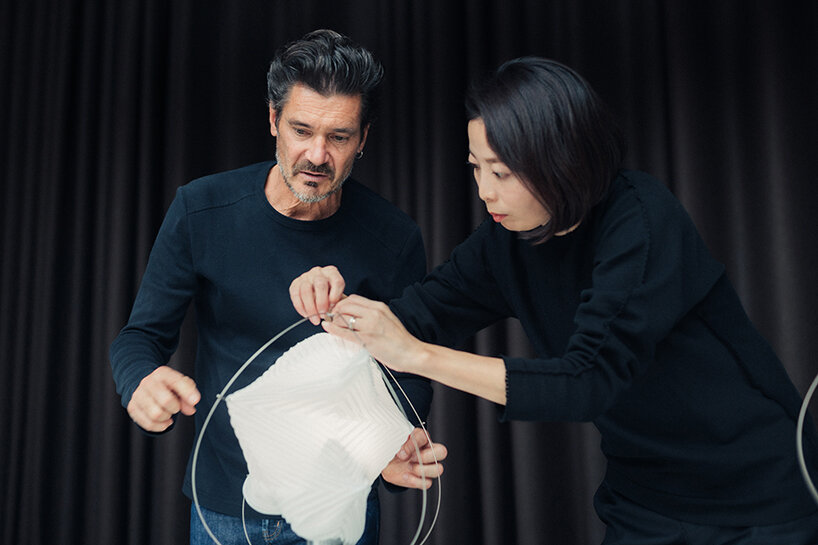
atelier oï designed an oval wire frame, while the lampshade incorporates a recycled polyester ‘Steam Stretch’ material, a textile technology utilized in A-POC ABLE’s clothes-making process
A Series: seamless knit meets modular lighting
The A Series on the other hand explores a different textile innovation, incorporating seamless knit fabric, a hallmark of A-POC’s design philosophy. Pre-knitted into a roll, the lampshades take form when paired with wire frames, allowing users to cut or connect them into custom configurations. This adaptability, akin to garment-making, encourages personal interaction with the design. The first prototype, developed with Spanish lighting brand PARACHILNA, introduces this modular concept in pendant form, hinting at future expansions.
‘A single piece of cloth, seamless and continuous, moves through the machine, allowing us to cut as much fabric as needed and shape it to fit any space. In this case, the supporting structure is embedded inside, but the fundamental concept remains unchanged—transforming fabric through intelligent design,’ Miyamae explains.
‘It’s much like making ravioli – except instead of filling it with meat, we use wire! The textile runs continuously through the machine, and we cut it to size based on the intended form. However, when the structure is placed inside, the textile pattern must be precisely predefined and adjusted, limiting its flexibility compared to external framing,’ adds Patrick Reymond.
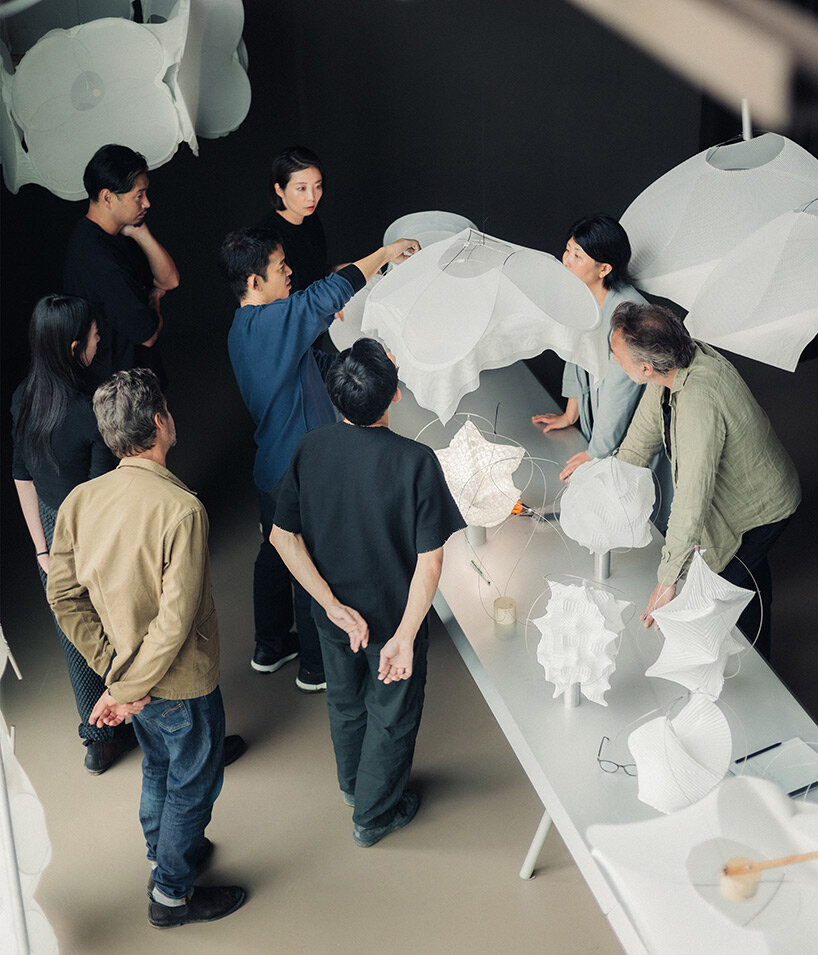
for the A Series, the lampshades are pre-knitted into a roll of fabric and take on a three-dimensional form when wire frames are inserted
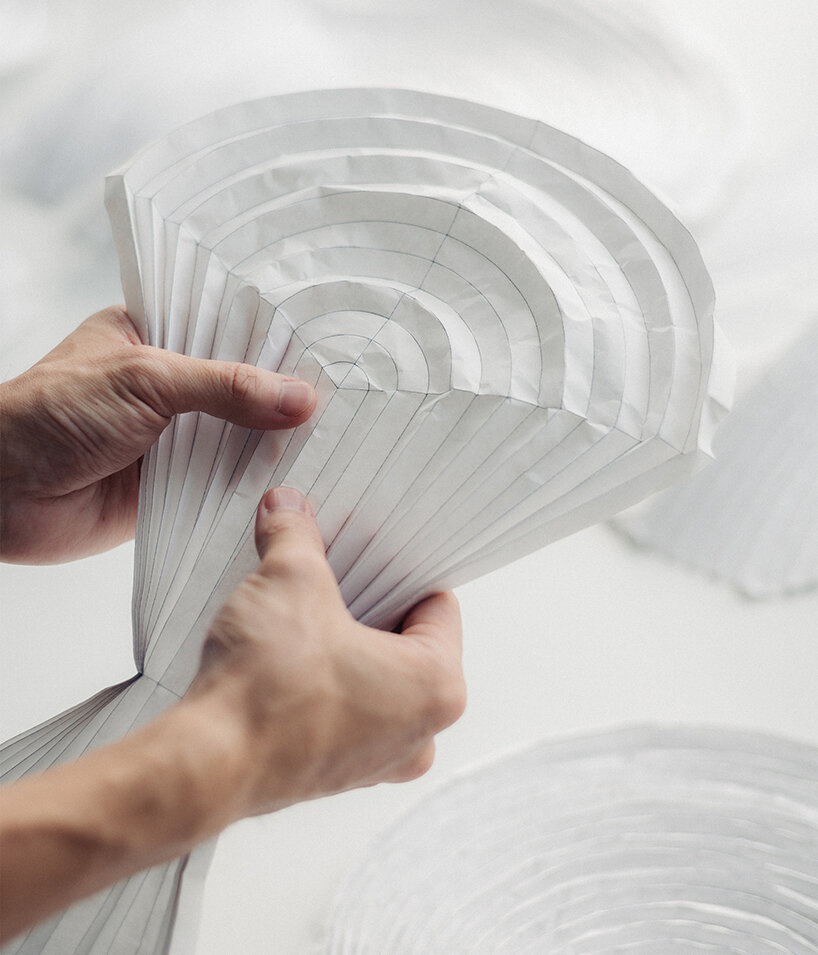
this adaptability, akin to garment-making, encourages personal interaction with the design
Both lighting series embody the essence of A-POC’s sustainability-driven production, where waste is minimized by weaving or knitting all the necessary information for designing and making a garment into the fabric. The same textile techniques used in A-POC’s fashion collections are applied to lighting, ensuring seamless integration between form and function.
‘The message we want to convey is that a single piece of cloth can become anything,’ Miyamae expresses to designboom. ‘This idea has been at the heart of A-POC since its inception. The fabric is not just a passive surface – it has the ability to take shape, interact with light, and adapt to different spaces. For Milan Design Week, our installation pays homage to the first A-POC collection from 1998, presented in pure white. The idea is to show that a single piece of cloth can take on endless forms – whether as a dress draping over a mannequin or a sculptural ceiling light.’
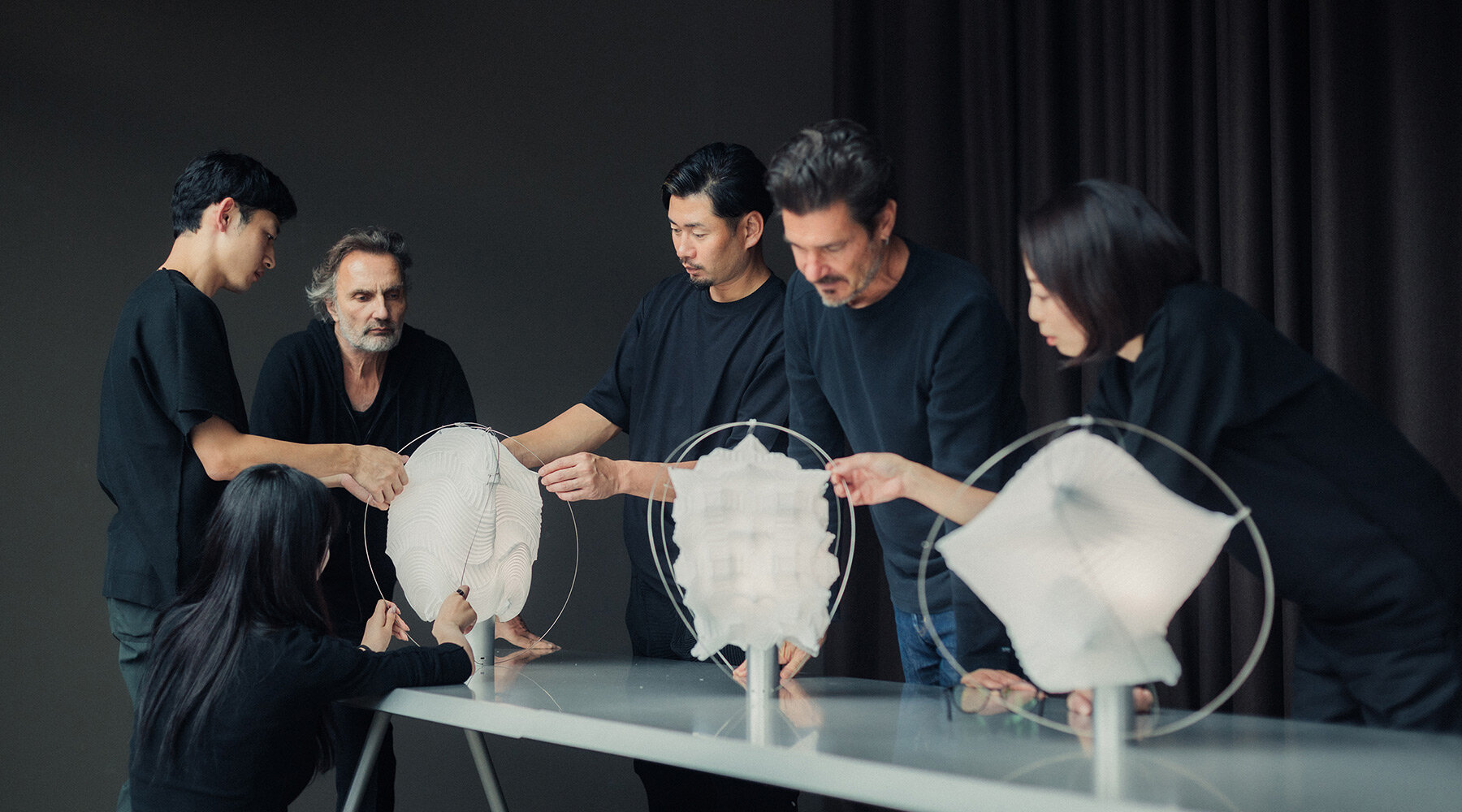
prioritizing the process of making things, ‘TYPE-XIII Atelier Oï project’ has evolved through an ongoing exchange of ideas, merging different perspectives and techniques
As the project moves forward, the designers see endless possibilities beyond lighting. The adaptability of A-POC’s textiles opens avenues for furniture, spatial design, and even interactive experiences. But for now, the Milan exhibition serves as an invitation to engage with light in a new way.
‘It’s not just about the product, it’s about sparking imagination. We want visitors to see beyond the object itself and envision new possibilities. If they leave the exhibition thinking about how they could use light in unexpected ways, then we’ve achieved something truly meaningful,’ concludes Miyamae.
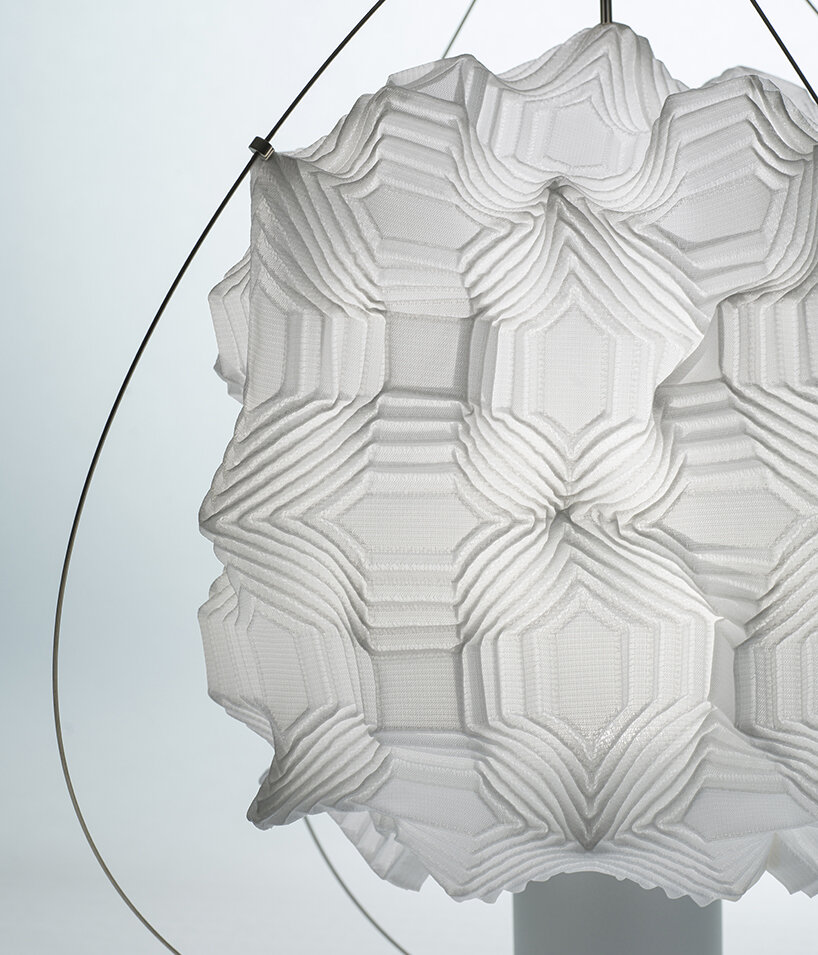
in this project, the possibilities of ‘a piece of cloth’ are further investigated, venturing into the new realm of lighting products
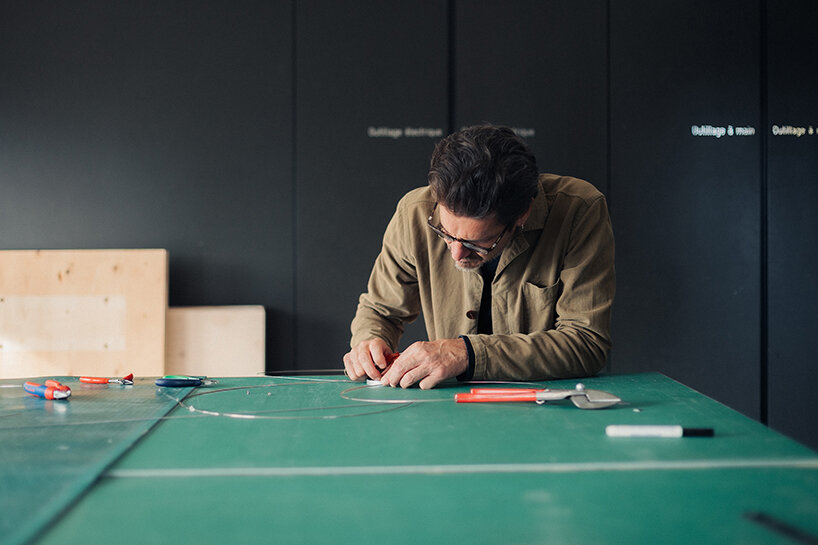
both lighting series embody the essence of A-POC’s sustainability-driven production, where waste is minimized by weaving or knitting fabric into precise, predefined shapes
project info:
exhibition name: TYPE-XIII Atelier Oï project
design: A-POC ABLE ISSEY MIYAKE | @apocableisseymiyake_official; atelier oï | @atelier_oi
occasion: Milan Design Week 2025
location: ISSEY MIYAKE / MILAN flagship store, Via Bagutta, 12, 20121, Milan
dates: April 8-13, 2025

